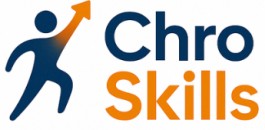
Understanding the Role of a Chief Human Resources Officer
The Journey of a Chief Human Resources Officer
The Chief Human Resources Officer (CHRO) plays a pivotal role in shaping the workforce landscape of any organization. Tasked with overseeing human resources strategies, this leader ensures that the company not only attracts but also retains top talent. One key facet of the CHRO's role is driving impactful employee development through tailored learning management systems (LMS) and content management approaches.
The CHRO must be well-versed in the nuances of learning management systems. These platforms have revolutionized corporate training, allowing for personalized learning paths that cater to individual employee needs. In a rapidly evolving business world, the ability to adapt and implement a custom LMS enables organizations to refine their approach to talent development.
An effective CHRO actively collaborates with technology teams to integrate key features into the LMS, such as content creation tools and real-time analytics. This integration allows businesses to track learning development and measure the impact of corporate training initiatives.
As organizations increasingly seek tailored solutions, the CHRO's role involves a deep understanding of custom elearning and how it fits into the broader strategy of talent nurturing. Through strategic management, they align the organization's goals with employee development objectives, ensuring a seamless learning journey.
Furthermore, with the rise of cloud-based solutions, CHROs must familiarize themselves with the latest in software development and platform innovation to offer flexible, scalable training solutions. Facilitating a culture of continuous learning requires a commitment to unlocking potential talent, often examining broader careers in training management.
In sum, a CHRO's proficiency in deploying sophisticated learning systems is a testament to their dedication to employee development. As they navigate the delicate balance of maintaining workforce efficiency and satisfaction, their leadership ensures the learning ecosystem supports both individual and organizational growth.
The Importance of Custom Learning Content Management Systems
Leveraging a Custom Learning Management System
In today's fast-paced business environment, the role of a chief human resources officer is significantly enhanced by the implementation of a custom Learning Management System (LMS). A well-designed LMS serves as a critical tool in delivering personalized learning experiences and facilitating effective learning development. Custom LMSs provide unique features that cater specifically to the distinct needs of your organization, thus enhancing learning paths for employees. Custom learning content management systems (LCMS) allow for the creation and management of tailored elearning content, ensuring that training remains relevant and engaging. These systems not only streamline content creation but also enable real-time updates and integration of various elearning tools, solidifying the LMS as a foundational element for corporate training strategies. The impact of a robust LMS extends beyond content management. It plays a crucial role in aligning learning development with strategic business objectives. Key features of these platforms include personalized courses, structured learning paths, and a seamless interface for both learners and administrators. As the demand for cloud-based solutions continues to rise, incorporating a cloud-based learning management system provides scalability and adaptability. This agility allows businesses to respond quickly to changing training needs and industry standards. Emphasizing an LMS with advanced management capabilities can lead to significant improvements in employee performance and overall organizational growth. To gain further insights into how talent mobility can be effectively harnessed within HR leadership and tailored learning systems, read more about unlocking the potential of talent mobility in HR leadership.Key Skills for Implementing Learning Systems
Implementing Advanced Learning Systems
One of the crucial skill sets for a Chief Human Resources Officer (CHRO) is the ability to effectively implement modern learning management systems (LMS). These systems, when custom-tailored, can transform the landscape of corporate training by providing a more personalized and adaptable framework. A CHRO must focus on integrating custom learning content that aligns with the unique needs of the business and its learners.
In today’s rapidly changing business environment, advanced LMS platforms come equipped with various key features designed to enhance the learning experience. These features include tools for content creation, cloud-based systems that offer flexibility and scalability, and real-time data analytics to track learner progress. By leveraging these tools, HR leaders can establish a robust learning path that supports personalized learning and gauges the effectiveness of the training programs.
Moreover, a comprehensive understanding of both LCMS (Learning Content Management System) and LMS technologies is vital. While LMS focuses on managing learner interactions and tracking progress, LCMS deals with the efficient content management and creation involved. A CHRO should ensure that both systems complement each other to provide the richest possible learning experiences.
Another aspect of success lies in software development involvement. HR leaders should work closely with IT professionals to ensure the LMS software integrates well with existing platforms and supports custom e-learning content which is crucial for continuous skill development.
Finally, adaptability is key. CHROs should be continuously adjusting their strategies and tools to accommodate evolving business needs and ensure that learning and development initiatives remain efficient and relevant. This ensures that systems not only keep up with the latest trends but also drive tangible business outcomes.
Strategic Planning for Learning and Development
Crafting a Precise Blueprint for Learning and Development
Strategic planning in learning and development requires a deep understanding of the organization’s goals and the specific needs of its workforce. By prioritizing a tailored approach, the Chief Human Resources Officer (CHRO) can align learning strategies with the broader business objectives. There are several key areas to focus on when designing a strategic plan for learning and development:- Evaluation and Assessment: Start by thoroughly assessing the current skills and competencies within the organization. Identify gaps and areas where training can drive business growth.
- Defining Learning Objectives: Clearly outline the desired outcomes from the learning management system (LMS). Use these objectives to guide the creation of learning paths and personalized learning experiences.
- Integration with Business Goals: It is crucial that the learning objectives are directly tied to the company’s strategic goals. This ensures that the training initiatives not only support employee growth but also propel business results forward.
- Selection of the Right LMS and LCMS: Choose learning and content management systems that boast key features and tools aligned with the organization's needs. Consider platforms with robust content creation functionalities and ease of use.
- Customization and Flexibility: Opt for a custom LMS that allows for personalized learning experiences. The LMS should support content creation and the development of custom eLearning content that meets the diverse needs of the learners.
- Scalability: Ensure that chosen systems are scalable and can grow with the organization. A cloud-based LMS offers flexibility and can handle the evolving demands of training delivery.
- Continuous Improvement: Implement a mechanism for regularly updating the training content. This can be achieved by leveraging real-time feedback from learners, ensuring the courses remain relevant and effective.
Overcoming Challenges in Learning System Implementation
Conquering Boundaries in System Adapting
Implementing a learning management system (LMS) comes with a unique set of challenges that organizations must navigate to create an effective learning environment. The learning process involves numerous elements, such as content creation, user experience, and system management. Each of these factors requires careful consideration and strategic handling.
In the fast-evolving world of learning development, corporate training must meet the diverse expectations of learners. To achieve this, the management system needs to be adaptable to the changing needs of users. It involves selecting the right tools that enhance the learning experiences, crafting personalized learning paths, and ensuring the system's key features align with business objectives.
One common obstacle is integrating the new learning management systems with existing platforms. It's vital to ensure compatibility across different software systems to avoid disruptions during the training process. By focusing on a cloud-based solution, businesses can facilitate easier access and flexibility in their elearning content delivery.
Engaging with stakeholders is crucial in overcoming these challenges. Regular communication with management and active feedback collection from learners can highlight potential roadblocks and areas for improvement. This open dialogue aids in refining both the content management processes and course creation.
Ultimately, a successful implementation hinges on a proactive approach in real-time problem solving, as well as collaboration across departments to ensure all features of the system align with the vision of enhancing employee development.
Measuring Success and Continuous Improvement
Evaluating Success Metrics and Facilitation of Continuous Growth
To effectively measure success and ensure ongoing improvement in employee development, it's crucial to integrate robust analytics within your learning management system. Evaluating the effectiveness of elearning content involves assessing its impact on business goals and learner outcomes. Here's a guide to navigating these evaluation processes:- Implement Key Performance Indicators (KPIs): Establish KPIs that align with your strategic goals. Consider metrics such as course completion rates, learner engagement levels, and improvements in performance following training.
- Utilize Learning Analytics Tools: Modern learning management systems offer analytics tools that track, manage, and report on learners' progress and performance in real time. These tools can provide invaluable insights into how effectively the content is delivering on its objectives.
- Encourage Feedback and Iteration: Create feedback loops with both learners and stakeholders to gather insights on what works and what doesn't. Utilize feedback to enhance content creation processes and improve training effectiveness continuously.
- Foster a Culture of Continuous Learning: Encourage personalized learning journeys and the creation of tailored learning paths that adapt to the evolving needs of your workforce. Embrace a culture where learning and development are seen as ongoing processes vital to individual and organizational growth.
- Explore Advanced Features of LCMS Software: Leverage the cloud-based functionalities of content management systems to ensure scalability and flexibility in delivering custom elearning experiences.













